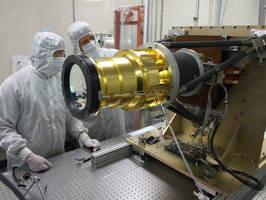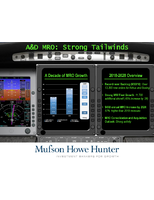Lockheed Martin Team Delivers First Geostationary Lightning Mapper Instrument for Weather Satellite
Share:

Sophisticated Sensor Will Give NOAA Earlier Warnings of Severe Storms
PALO ALTO, Calif. - A Lockheed Martin [NYSE: LMT team delivered the first Geostationary Lightning Mapper (GLM) instrument that will provide earlier alerts of severe storms and contribute to more accurate tornado warnings. The sensor will fly on the National Oceanic and Atmospheric Administration's (NOAA) next-generation Geostationary Operational Environmental Satellite (GOES) missions, known as the GOES-R Series.
The team is preparing integration with the first GOES-R spacecraft at Lockheed Martin's facility near Denver. The satellite is expected to launch in early 2016.
"GLM will have the potential to save lives by using lightning as a reliable indicator of severe weather, like tornados," said Russell Katz, Lockheed Martin GLM deputy program manager. "A rapid increase of in-cloud lightning can precede severe weather on the ground. Changes in that type of lightning can also give us a better understanding of the updraft strength in thunderstorms."
GLM provides a new capability to track lightning flashes from geostationary orbit, with continuous coverage of the United States and most of the Western Hemisphere. The heart of the GLM instrument is a high-speed (500 frames per second), 1.8 megapixel focal plane, integrated with low-noise electronics and specialized optics to detect weak lightning signals, even against bright, sunlit cloud backgrounds.
The GLM team leveraged common systems. GLM uses technology developed for the Lightning Imaging Sensor used on NASA's Tropical Rainfall Measuring Mission. Plus, it sets a new standard for pixel imaging, since it uses a new technique that delivers sharp resolution at the edge of its observable area, compensating for the curvature of the Earth. This benefits future Earth-observing missions from geostationary orbit.
GOES satellites are a key element in NOAA's National Weather Service operations, providing a continuous stream of environmental information (weather imagery and sounding data) used to support weather forecasting, severe-storm tracking and meteorological research.
The GOES program is managed and operated by NOAA, which establishes requirements, provides funding and distributes environmental data for the United States. NASA's Goddard Space Flight Center, in Greenbelt, Maryland, manages the GLM instrument development as a part of its support to NOAA's development of the GOES-R Series of satellites.
Headquartered in Bethesda, Maryland, Lockheed Martin is a global security and aerospace company that employs approximately 113,000 people worldwide and is principally engaged in the research, design, development, manufacture, integration and sustainment of advanced technology systems, products and services. The Corporation's net sales for 2013 were $45.4 billion.
For additional information, visit our website: http://www.lockheedmartin.com
Media Contacts:
Mark Lewis
Office: 408-742-3516
Mobile: 408-203-8093
mark.e.lewis@lmco.com
Â
Gary Napier
Office: 303-971-4012
Mobile: 720-224-7955
gary.p.napier@lmco.com
Source
Lockheed Martin
Web Site: http://www.lockheedmartin.com




